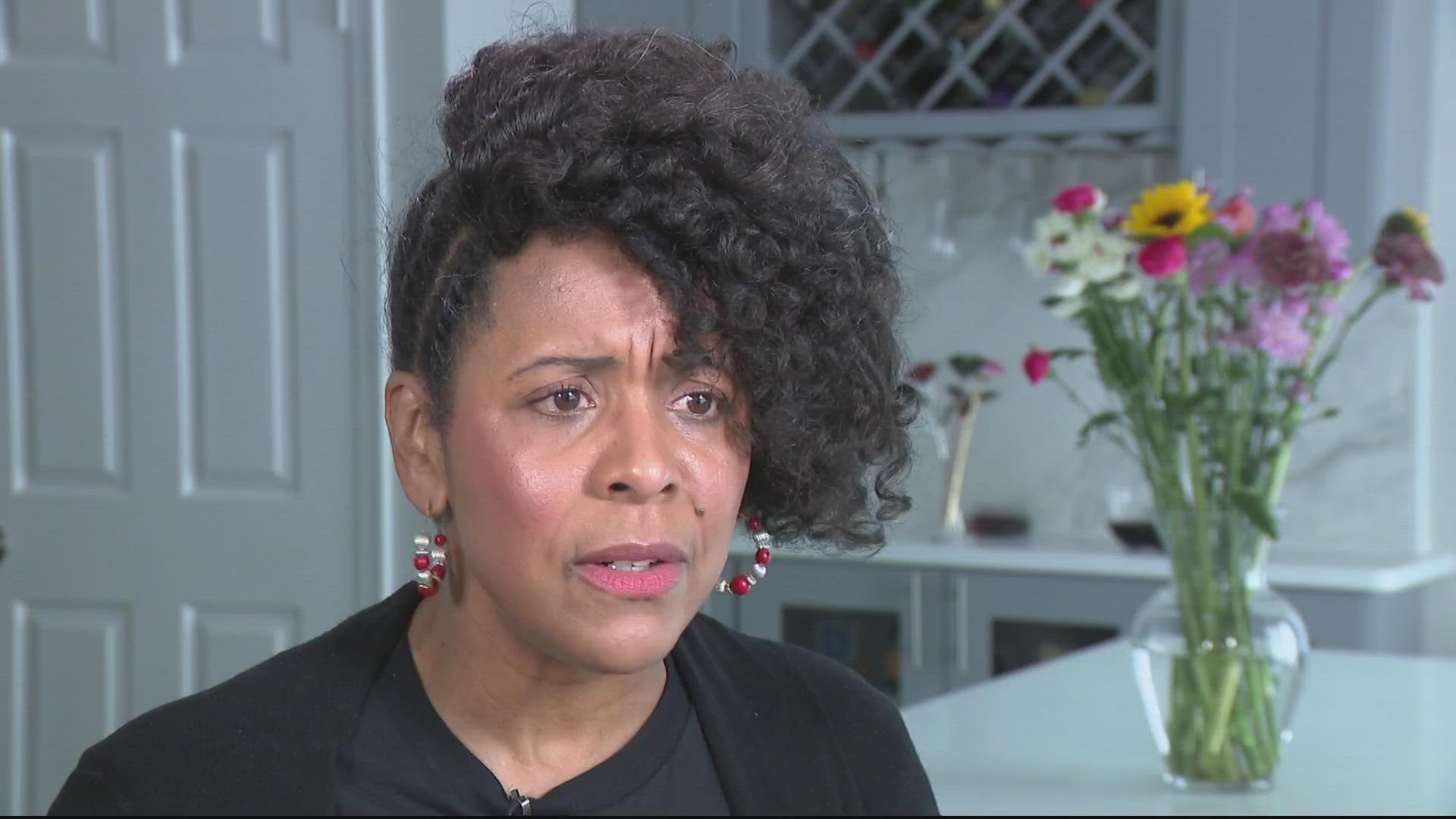WASHINGTON — February is Heart Health Month and Friday is Wear Red for Women Day. It's an opportunity to highlight how women are impacted by heart disease. Heart disease remains the leading cause of death among American women.
Wearing red is a good visual sign, but heart disease is not easy to spot.
Some people need a push to put health first. What Donnese Tyler needed was a pause.
"I actually worked out for 30 days straight, followed an optimal wellness plan. I actually lost 40 pounds. I did that for my 50th birthday," Tyler said. "I was just really doing a lot at work and just going and going and going."
The hard-working, faithfully volunteering, always-moving mother of two was stopped in her tracks by a pain in her chest after a school meeting last fall.
"I was like, 'There's no way I'm having a heart attack,'" Tyler said of the pain. "I'm doing everything I'm supposed to do. I'm eating right. I'm working out. I'm taking care of myself."
She said she was lucky it happened when it did.
"Thank goodness I was there with a bunch of mothers because had I been at home, I would have just chalked it up to acid reflux. I would have laid down and who knows what would have happened after that," she said.
Those other moms pushed her to get to the hospital. That's where she learned it was a heart attack. Specifically, a spontaneous coronary artery dissection, or SCAD.
We spoke with Dr. Erin Michos from Johns Hopkins and the American Heart Association to find out more about SCAD heart attacks, and learn the signs.
"It really is a sudden event," Dr. Michos said.
SCAD occurs after a tear in heart tissue blocks the artery. It's more common in women. That's because hormonal influence, stressors and a history of any other heart issues -- like during pregnancy -- make it more likely. Even among people who are otherwise healthy.
"Although women do get chest discomfort the same as men in the setting of a heart attack," Dr. Michos said. "It can be pressure or squeezing or gripping in the arm or the jaw, but women more commonly often have other associated symptoms like fatigue, shortness of breath, nausea and abdominal pain and back pain."
Don't let those be a distraction. When the heart is involved, it is serious, so seek help, Dr. Michos said.
"People need to listen to their bodies and recognize when something is not right," she said.
Now Donnese meditates, has learned the art of saying no, and works out as part of her recovery. She drives from Springdale to Bethesda three times a week to get her heart pumping -- safely.
"They are able to monitor me while my heart rate is getting up," Tyler said.
She's also doing more to let others know about SCAD.
"I'm trying to spread the word. Get it out there, just so people are aware that the normal signs of a heart attack that we've heard for years aren't necessarily your signs," Tyler said.
Tyler agrees with Dr. Michos.
"Do not self-diagnose, which is what I would have done. If something does not feel right, if you are experiencing something that does not feel normal, go to the doctor. Pay attention to your body."
Tyler is speaking at a panel this month to talk about her experience.
There are some factors in our control when it comes to preventing heart disease. A good start would be following the American Heart Association's guidelines for a healthy lifestyle.

